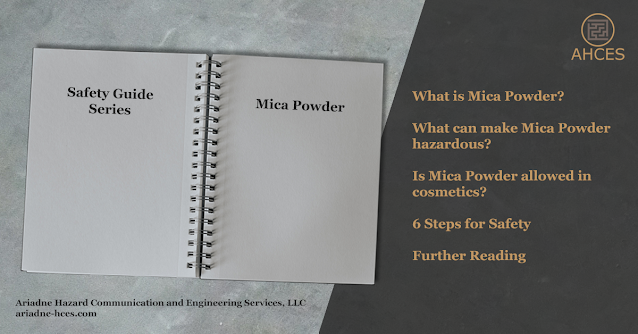Chloroxylenol Safety Guide
What is Chloroxylenol?
Chloroxylenol, also known as para-chloro-meta-xylenol (PCMX), is a phenol, a type of organic compound. It is commonly used as an antiseptic and disinfectant for topical use. It has widespread use in both medical and household settings.
Chloroxylenol has the CAS Number 88-04-0.
Notable Properties of Chloroxylenol
Pure chloroxylenol is solid at room temperature, forming white to off-white crystals. It is soluble in ethanol, as well as some other alcohols, and can also be found in a liquid concentrate.
Chloroxylenol has a phenolic odor, which is often described as both sickly sweet and similar to tar.
What Makes Chloroxylenol Hazardous?
Concentrated chloroxylenol is an irritant, able to cause skin irritation on contact and serious eye damage. Chloroxylenol is also reported to be a skin sensitizer, with the possibility of developing contact dermatitis with repeated contact over a long period of time.
Chloroxylenol Frequently Asked Questions
Can chloroxylenol kill bacteria?
Yes, chloroxylenol is particularly effective against gram-positive bacteria and is used as an antimicrobial and disinfectant.
Is chloroxylenol safe for skin?
Chloroxylenol, when used in a properly formulated topical antiseptic or disinfectant, can be safely used on the skin.
When in a concentrated form, chloroxylenol can be highly irritating to the skin. Repeated exposure to chloroxylenol can also cause contact dermatitis.
6 Steps for Safety
Step 1: Read the Warnings
When working with a product for the first time, always read all the safety documents first. This includes safety data sheets, which should be provided by the manufacturer or importer of the clove oil product. There may also be an OSHA chemical label or Consumer Protection label on the packaging of the chloroxylenol product. These documents all contain important information on the hazards of the product and instructions on how to mitigate those hazards.
Different compositions in different products may cause additional hazards to be present beyond the properties of chloroxylenol. Be sure to familiarize yourself with the differences between separate chloroxylenol-containing products.
Step 2: Prepare Your Workspace
Creating a safe workspace, sometimes referred to as engineering control, is a key component of working safely with any potentially hazardous substance.
Chloroxylenol is solid in pure form. When working with it as a solid, it is important to avoid dust generation. Therefore, a good ventilation system is necessary, including a dust collector.
When working with chloroxylenol in a liquid formula, it is important to have a spill kit available with absorbent material to soak up and capture any spilled chloroxylenol product.
Step 3: Gather Your PPE
For handling chloroxylenol, the following PPE is
recommended depending on concentration and quantity being used.
- Gloves
- Basic disposable gloves, or other rubberized gloves, will prevent chloroxylenol from touching the skin on the hands and causing irritation.
- Respiratory Protection
- A mask meant for fine dust will protect the respiratory system from irritation.
- Eye Protection
- Safety goggles which form a protective seal around the eyes can be used to prevent chloroxylenol dust or liquid splash from reaching the eyes.
Step 4: Clear Your Workspace
Having a clear workspace is an important part of safety. Clutter can cause accidents and can prevent you from noticing if something has spilled.
This is also a good time to double check any engineering controls present to ensure they are in proper working order.
If you are working in a shared space, make sure anyone around you can also remain safe when you are working with chloroxylenol. For those working at home, this can include family members and pets.
Step 5: Do The Work
If engineering controls and PPE are used properly, working with chloroxylenol has minimal hazards.
As chloroxylenol can cause contact dermatitis, it is particularly important to avoid skin contact. If clove oil does get on the skin, be sure to clean the area thoroughly with soap and water. If signs of an allergic reaction occur, such as redness or swelling, seek medical attention from a licensed medical practitioner.
If work cannot be completed in one sitting, be sure to properly seal any chloroxylenol containers to prevent spills or accidental release when not in use.
Step 6: Clean Up
Clean up will vary depending on the form of the chloroxylenol. If solid, avoid dust generation by using a damp cloth or vacuum with a filter suitable for fine dust. If liquid, use an absorbent material, such as paper towels, or a granular absorbent, such as sawdust
Be sure to dispose of any waste in accordance with local regulations.
Further Reading
The National Library of Medicine has a PubChem article on Chloroxylenol.
Check out the Safety Guide Series Hub for more safety guides.
Sources Cited
Agency for Toxic Substances and Disease Registry (2021). Toxic substances Portal, Phenol. Retrieved September 17, 2024 from https://wwwn.cdc.gov/TSP/substances/ToxSubstance.aspx?toxid=27.
National Center for Biotechnology Information (2024). PubChem Compound Summary for CID 2723, Chloroxylenol. Retrieved September 17, 2024 from https://pubchem.ncbi.nlm.nih.gov/compound/Chloroxylenol.
National Center for Biotechnology Information (2024). PubChem Annotation Record for , CHLOROXYLENOL, Source: Hazardous Substances Data Bank (HSDB). Retrieved September 17, 2024 from https://pubchem.ncbi.nlm.nih.gov/source/hsdb/7427.
United States Environmental Protection Agency (1994). R.E.D.
Facts, Chloroxylenol. Retrieved September 17, 2024 from https://nepis.epa.gov/Exe/ZyPDF.cgi/2000E7UW.PDF?Dockey=2000E7UW.PDF.





Comments
Post a Comment